I have been using Seachem Purigen in the filter section of my Fluval Spec V aquarium for a few months now. I recently pulled up the filter material and the Purigen has now turned a nice, dark brown patina. Their instructions have the following to say about when to clean: “Exhaustion is indicated by a pronounced discoloration of the beads to dark brown or black.” While not yet black, I couldn’t help myself and decided to have a go at cleaning it.
Being able to clean (regenerate, or recharge) this media and put it back into use is a significant positive that I discussed in my Seachem Purigen Review. Their literature states that it can be regenerated up to 10 times. Some people are a bit uneasy about cleaning it as it involves some methodology and materials that could be harmful, namely bleach.
I will rehash Seachem’s exact instructions here, and then I will describe in my own words how to clean your Purigen. From their website: [Seachem has updated portions since this article was first published, and those changes are now included below – I have indicated changes with bold text]
Soak in a 1:1 bleach:water solution for 24 hours in a non-metallic container in a well ventilated area and away from children. Use regular 8.25% hypochlorite household bleach (non-scented, no dyes, do not use a splash-less bleach). Rinse well, then soak for 8 hours with a solution containing 4 tablespoons of Prime®, or equivalent dechlorinator per cup of water. Rinse well. For freshwater use, soak for 4 hours with a solution containing 2 tablespoons of buffer per cup of water (Discus Buffer®, Neutral Regulator®). Original color and full activity should now be restored and Purigen® is ready for reuse. Caution: some slime coat products may permanently foul Purigen® and render regeneration difficult. Do not reuse if odor of bleach/chlorine is detectable. In case of doubt, soak beads in small quantity of water and test for residual chlorine with a chlorine test kit.”
One notable change Seachem has added over the years is the recommendation to final soak in a buffer for 4 hours if the Purigen is being used in a freshwater tank. I have never performed this extra step, and I have not experienced any adverse effects. My step-by-step instructions below forego the buffer soak (as that is what I’ve had success with), but do proceed with caution and consider complying with their recommendation as a best practice.
Another change is the dechlorinator soak is now a ratio of 4 tablespoons of Prime (2 tablespoons used to be their recommendation) per 1 cup of water.
Supplies Needed to Regenerate Seachem Purigen:
- Aquarium Safe Tupperware Container. Preferably, one that has a footprint that will allow your Seachem bag to lay flat. By aquarium safe, I mean one set aside for aquarium use only that has not been washed with soap. Don’t use a metal container, as the bleach can corrode/react with it.
- Bleach. I choose to use Clorox brand as we have it, and it was mentioned (previously) on Seachem’s website that is what they use. (I have additional comments on the bleach brand and type later on.)
- Seachem Prime Dechlorinator
- Tap Water
- Your Dirty, Nasty Purigen
Step One: Remove your bag of Purigen from the filter. Rinse it under gentle tap water to remove major sediment. Put the Purigen bag into your Tupperware.
Step Two: Measure out the bleach and tap water into your Tupperware in equal parts (to make a 1:1 ratio mix). I wanted to give my Purigen a little elbow room, so I put 1-1/2 cups [350 ml] of water and 1-1/2 cups of Clorox bleach.
Step Three: Let this sit for 24 hours. Every once in a while, I swished the bowl around to mix up the contents, trying to get all the contents inside the bag exposed to the bleach. The smell of this process can be foul – at the end of 24 hours, it had a bit of a dead fish smell. I kept the bowl out in the garage. I would suggest somewhere outside your home. If you’re in an apartment, maybe in the bathroom with the vent fan turned on. At the end of 24 hours, the water was significantly tinted with junk that had been pulled out of the Purigen. Looking good!
Step Four – Rinse the Purigen: At this point, you have a product that has released much of the contaminates stuck to the surface, but it is swimming in said junk and coated in bleach, neither of which you want back in your aquarium. I spent a solid 5 minutes rinsing the Purigen bag under running, cold tap water. Flip the bag over and over to try and get all the pellets exposed to running water.
Step Five – Prime Soak: Rinse out your Tupperware container. Fill with 1 cup [237 ml) of tap water and 4 tablespoons [59 ml] of Seachem Prime. Let that soak for 8 hours. If you are cleaning a larger bag, keep the ratio the same but increase the water to fully submerge the Purigen.
Step Six: Rinse the Purigen again under tap water. That is what the instructions said to do, but then you have chlorinated tap water in your Purigen. This might be overkill, but . . .
Step Seven: Rinse Tupperware, fill 1/2 to 3/4 with tap water, put Purigen bag in, and add two drops of Seachem Prime to remove chlorine. Let that sit for a few minutes. For marine aquarium use, I substitute RODI water for tap water in this step and would probably forgo the Prime water conditioner. Tap water would probably work OK, but I have a hard time finishing with tap water when it’s for a saltwater tank.
Step Eight: Put Purigen back into your aquarium’s filter media.
Results:
My 100ml bag of Purigen didn’t get as snow-white as I expected from their description, but it was much cleaner after the whole process.
After adding it back to the aquarium, I had no trouble with my fish or shrimp. It’s not too much hassle, and having it back to nearly its original state is very nice.
If I did this often and relied on the product to be ready at all times, I would consider having two bags with one as a backup to rotate in while I clean the other. When you store the product, make sure to keep it wet; add a splash of water into a ziploc bag and seal it all up.
Update – Results for Saltwater Aquarium Use:
We now have a nano saltwater tank up and running, and I have had the opportunity to regenerate several 100 ml bags of Purigen in rotation for this tank.
The process is the same for Saltwater and freshwater (understanding that I do not do the buffer soak as Seachem recommends for freshwater use). The only difference is one that I mention in the instructions of this article – for saltwater, I give a final rinse and soak in RODI water (as opposed to a final rinse in dechlorinated tap water).
It has worked great. Nothing has died. There are no adverse effects to fish, snails, corals, or anything else we observe in this marine system. I had some trepidation using this process for a more sensitive saltwater system, but it has worked fine.
Having said that, don’t skip steps. Make sure it is thoroughly rinsed with no traces of chlorine left in the Purigen. If you question any part of the regeneration process, it’s best to throw the media out and replace it with new. In the grand scheme of things (considering the high cost of even a simple nano reef setup), it’s not worth risking a tank full of coral and fish over a $12 bag of Purigen.
I know many reefers will not regenerate Purigen – they simply throw it out and replace with new. This is the safest option and is a decision I understand and can respect.
Final Word on Bleach Type:
This past regeneration cycle for our Marine Purigen bags, I looked to see what type of bleach I used. I noticed the phrase ‘splashless’ on the bottle. A closer look revealed only 1.5% of the active ingredient sodium hypochlorite. The regen process still worked ok, but it’s best to stick with Seachem’s recommendation of around 8.25% sodium hypochlorite. Having said that, almost all bleach manufacturers have lowered this to about 6% hypochlorite.
In summary, avoid bleach that uses the phrase “Splashless”, check for around 6-8% sodium hypochlorite, and check the description and ingredients to verify there are no additives (fragrances).



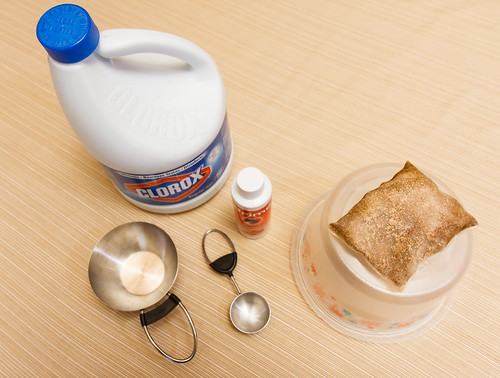
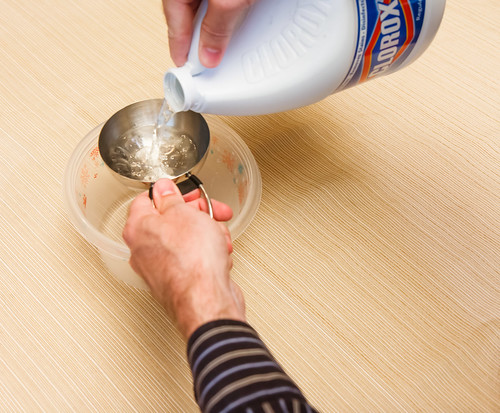

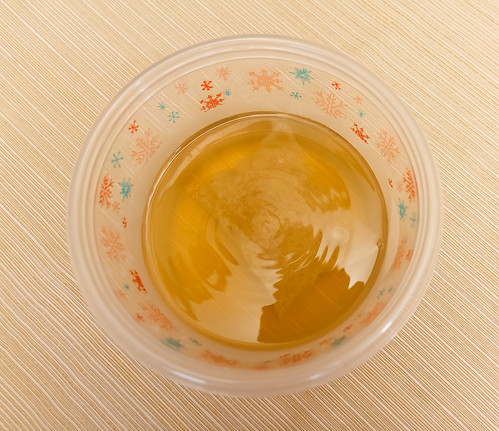
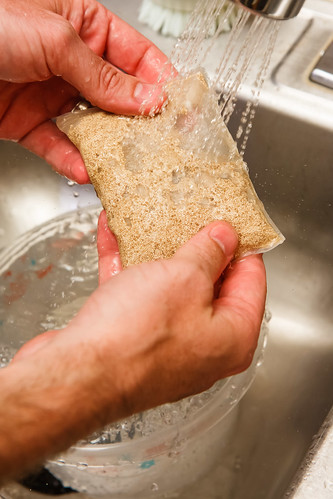
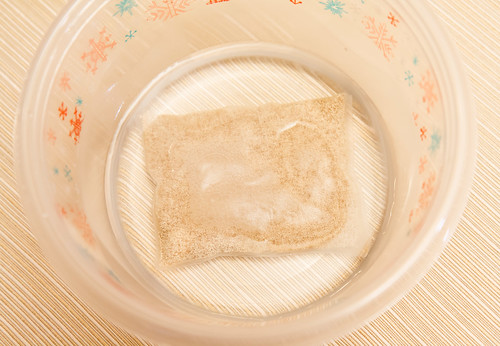
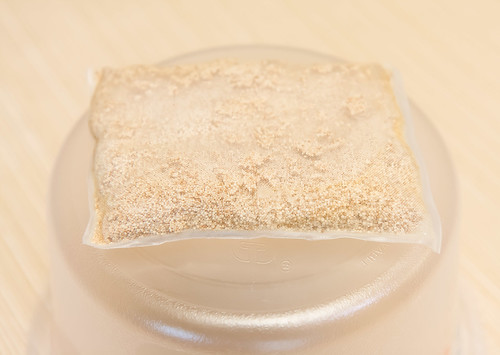

Very detailed… Thank u.
I was REALLY nervous using bleach in anything related to my tank but I did the process and nothing bad happened. My betta didn’t cease any of her normal behaviors as soon as I put it back in or after. I just made sure to rinse VERY well after the bleach soak and did several smell tests.
I did what you said about having 2 for backup while one gets cleaned. The normal size filter was to big for my tank so I ripped it open and poured half into 2 different filter media bags. I can reuse the bags as needed after the 10 cleaning cycles. I wouldn’t say it’s saving me a ton of money since I still have to buy the bleach and more filter beads, but I do feel safe using it and notice my water quality is top notch, much better than the dumb little sponge filter my tank came with. I trust my ghost shrimp to handle any debris and sunken food, while my pothos plants soak up then excess nitrates.
Always looked at this but was unsure.
But after your very detailed reviews I am totally sold on it and brilliant review.
Hi Nate,
I finally set up my Fluval Spec V and put in the Purigen. An interesting observation: the insert that comes with the Purigen (the same size as the one you used for review) has these instructions instead after the 1:1 bleach soaking: Rinse well, then soak for 8 hours with a solution containing “4” tablespoons of Prime per cup of water. Rinse well. “For freshwater use, soak for 4 hours with a solution containing 2 tablespoons of buffer per cup of water (Discus Buffer, Neutral Regulator).” Original color and full activity should now be restored and Purigen is ready for reuse.
I added the quotes to distinguish the new instructions in addition to yours. I wonder what you think about this. Their website also has these new steps now. I haven’t heard of these solutions before but after a quick search, Big Surprise!, they are made by Seachem. Apparently, they adjust pH and the latter also removes chlorine, chloramine, or ammonia. Since both solutions are not exactly the same, I wonder how can they be used interchangeably. Hopefully someone might add some thoughts on this new development. Money grabbing by a company or necessary step. Nate, since you’ve used the old and simpler method to regenerate your Purigen, has it performed up to par and no detrimental effect on your tank?
Thanks for the heads up on the change to the instructions by Seachem. That is exactly what I suspect: money grab to sell a new product. The way I present (old instructions) have worked fine. I have regenerated twice and am due to regenerate again. I won’t be changing the approach from what is here as it works.
The directions on your package may say to use 2 tbsp of Prime. This was based on what used to
be the most commonly sold household bleaches which were 6%. This concentration is not sold anymore.
By doubling the Prime dosage, we are accounting for newer 8.25% hypochlorite bleaches while erring
heavily on the side of caution. Also, we would not recommend using a splash-less bleach or a 33%
more concentrated bleach as these will not be in the proper form or concentration for the
regeneration process. We also recommend smelling Purigen after the regeneration process.
If there is a chlorine or bleach smell, repeat the process of soaking in Prime.
I did my first Purigen regeneration in late October after using it for about 7 months housing either 1 betta or 5 neon tetra plus a few ghost shrimps. I didn’t use the Discus Buffer or Neutral Regulator but I did follow the new instructions by using 4Tb of Prime instead of 2Tb from the old instructions (since I have a big bottle). The bag was pretty dark brown, perhaps a tad lighter than yours. After 1 day in the chlorine, it actually turned pearly white, much whiter than yours. After rinsing it clean and storing in water on Monday I waited till the weekend to put it back in (due mainly to time constraint).
Before doing so, I tested the pH of my tank (around 7.0) and the water housing the Purigen (6.0 or lower). I was doing some research on Purigen and some people mentioned that they had a pH crash after regenerating Purigen, especially with a small volume of water, like our Fluval V. The pH test came back bright yellow with yellow being 6.0 and is the lowest one on the scale in the API Test Kit, so the actual pH might be even lower. I should have kept changing water frequently during the week after the regeneration but I didn’t read about the pH crash until later. So, I threw caution to the wind and hoped for the best. Since tetra (at least the wild type) is okay with lower pH from what I’ve read. For the next 6 days, I did a water change of half a gallon a day and tested the pH each day. It had gone from bright yellow to pale yellow after day 1 but had stayed the same for the next 5 days. On day 7, I did a 50% water change and it was still pale yellow. Since then, I have just done my usual weekly 20% to 50% water change. It was not until mid-December that the pH came back as a greenish yellow, which is around 6.4, I think (it is awfully hard to tell the slight gradation of color apart from the chart).
That first week, I was thinking I better get some of those extra stuff Seachem instructed so I did some research on Discus Buffer and Neutral Regulator, thinking they most likely neutralize the acidity of the Purigen after regeneration. Well, the Neutral Regulator does exactly that as the name implies but the Discus Buffer is to adjust pH down to 5.8 to 6.8 which doesn’t keep with the pH crash problem. That seems contradicting.
As Stormal mentioned, Seachem probably did change the formula somewhat. So, for the next regeneration, I will definitely use the Neutral Regulator to treat the Purigen so hopefully, the pH will get back to near neutral. I consider myself lucky this time since it had been a big pH swing, but the tetras have had no ill effects, the shrimps are okay (a few always jumped to their death but I can’t ascertain whether the pH has to do with their suicide), some plants are doing fine while others are turning more yellow and some leaves have melted. I did consider adding the Neutral Regulator at the beginning but I didn’t want the big swing back in so short a time. But when the pH has come back up some I have been adding the Neutral Regulator on a weekly basis during regular water change for the last 3 weeks. It has come back to around 6.6. It has been a very slow process, slower than I like but probably for the best.
Thanks for that “real world” account, Tristan! I will definitely start adding Neutral Regulator to my Purigen-regeneration water.
I am on the third soak to be honest . Worried to put back into the tank.
Can I use the Tetra Aqua Safe dechlorinator & conditioner liquid instead of the Prime? I have a big bottle of it so if I can avoid buying the Prime it would be great. Thanks!
I don’t know. I’ve only use Seachem Prime and can’t vouch for anything else. I’d think it would work.
Thanks, I guess I can try it. What’s the worst that can happen? I wipe out the thousands of dollars of coral I have in the tank? lol…I’ll test it on a pad, and see how much bleach it takes out. I assume you use the dechlorinator to remove the bleach, correct? I use rodi water for rinsing etc so Im not worried about tap water dechlorinization.
you salt water guys – yikes! I think the dechlorinator helps to neutralize the bleach. The most important thing is to rinse heavily in tap water to get the bleach out. Your final step (soaking and final rinse) can be with rodi to ensure all is good.
I have a 65 gallon freshwater tank. Newly setup from a 20 gallon,on May 2, 2016. Six days prior to that I purchased 2 large pieces of driftwood that soaked in a new trash can,changed water daily.
Left for a 4 day vacation and the water was so brown you could not even see the fish! Read about the Purigen and purchased 4 bags. Put in two, the water is much better,not clear,but have been reading this may take up to a year. Changed the bags already. Soaking in the bleach water mix,but not turning “white”. Is this permanently stained and really not worth recharging? How long should I leave the bags in the filter as they are staining so quickly? Thank you for any help.
Recharging isn’t going to get them all the way ‘white’, or back to the color of original. It’s up to you how often to recharge – your’s is a demanding situation for this product. If you don’t feel the bags are removing tannin, it’s time to recharge.
Well Clorox bleach is the key! I used some bleach we had around the house and it removed a ton of the tannin. I rinsed them left them soaking in water and picked up Clorox on my weekly shopping trip. Seconds later White! Now if I soaked them in a no name bleach for 24 hours,should I leave them soak in Clorox for another 24,or because they are now white cut the time? Will it damage the pellets leaving it longer? I will continue almost heavy water changes and use the bags,I believe we can get the situation under control eventually. I am sure that 6 months to a bag in this situation is out of the question. How many times do you feel they can be recharged before they are trash?
Hi Nate – I love Purigen! I have 5 tanks and use the 100 ml bags in all of them, and have for a couple of years now. I use 1 pint glass mason jars to do my regeneration, with a plastic lid. I can fit 2 or 3 bags in one jar (2 is better). I put the lid on, then shake it up to distribute the bleach solution. The lid also keeps the smell down! I have 2 lids, one marked W and one marked B. The B is to let me know it’s the bleach solution; the W is the dechlorinated water. Helps me keep straight which step I’m on for whichever bag is in the jar.
I’ve got 12 bags so I always have clean ones ready to go. One question: why do you keep it wet when storing? I let mine dry out between uses and haven’t noticed any trouble.
Also: when a bag finally wears out (in a year or so for most tanks, but only 6 months in my mangrove tree crab tank – those are the filthiest crabs I’ve ever seen!), I dry it out, open the bag and mix it in with the ChemiPure and carbon I use in my filter bags. Since I discard them with each filter clean-out, it only gets used this one time. I’m not sure if it helps or not, but it makes me feel like I’ve squeezed every penny out of my purchase. LOL!
Great tips! You very well might be right about drying out purigen when storing. However, Seachem actually instructs you not to let it dry out. It might be on their website, but it is also in this thread (answered by a seachem representative)
Great idea to use Mason jars! Tried it today and it works perfectly. No bleach odor throughout the house. Thank you.
Excellent illustration. it illustrate more than what seachem provided details on bottle i purchased.
I am from india. where we can buy Clorox? is this bleacing water? or is any alternate product available in market?
Yes ,it is bleach. The first time I tried to regenerate I used a generic brand that did not “clean ” like Clorox.
It has taken 6 months of changing out the filters every 2 weeks to remove the severe tannins in my tank.
I am now in maintenance mode, and will just change out the filters every 4-6 weeks.
I think the time and additional cost of the 2 rinsing agents, I chose to toss and replace.
If you are not having a problem with the tank,perhaps just tossing and replacing the filters are the best,unless it is cost prohibited.
Agree with your regen process but would caution users on the amount of Prime Seachem recommends to dechlorinate. I’ve used Purigen for a couple of years now and found that you can get by with a 1 part bleach, 2 part water ratio and only 1 capful of Prime. Following the dechlorination process, I’ll soak my bags in fresh tap water for the next 2-3 days and the final day in RODI. Start to finish, my process can last a full 5-6 days. If you rush and don’t remove the majority of the Prime, it will cause your skimmer to overreact and may adversely affect your corals.
I have always bought a new Purigen after I thought mine were getting low on filtering ability.
I thought, fine, I can rstore the bleach part, but what’s this Prime stuff I have to buy as well??
I looked in my cabinet and I already had that! Funny: I’ve used it for my fancy goldfish to take down the nitrate levels and it works wonders for that.
I have just rinsed well with water, until bleach smell is gone. Never have a problem. The bags will regen for a long time, and after about a year, they start to dissolve away. I have a 55 with a few too many goldfish, and Purigen along with a separate cannister filter, and a sponge filter. I have used these for years.
Confused in the instructions where States. ” for fresh water….. ” I have fresh water aquarium ,but follow the bleach cleaning before that..is this saying w/fresh water don’t need to do bleach,just Neutral Regulator? Confusing to me…..
Good morning i have used purrigen 100 ml bags and never tried to refresh i live in england and can not get hold of chorlox bleach can i use patio cleaner swimming pool liquid cholrine multisize or can i use plastic plant cleaner and what prime seachem cholrine buffer please let me know thanks
I think you are meandering down a dangerous path. You have to know all the chemicals you are proposing and know that they aren’t harmful to your tank. Honestly, for the small 100ml bags of Purigen, I’m starting to think regeneration may not be worth the time. Replacement bags are not that expensive.
Thank you for all the valuable information. I inherited a 20 gallon tank with everything, fish and all. I have been battling cloudy water . I have tried everything. I have tested for everything and my water parameters are where they should be. I don’t over feed, and I do my water changes like I should vacuuming evertime.I recently purchased the ready bag and put this in my filter area about 2 weeks ago. My tank is still cloudy. I removed the purigin and it is brown. I have to say Bleach scares me to death but I’m going to give it the old college try. Is this common that it would brown in a couple weeks without any quality change in my water?
I had cloudy water in our Spec V after the last rebuild in January. I had the worst time with cloudy water for a few days after we set up the tank. It turned out to be a biological bloom – common for new tanks. For a biological bloom, you just wait it out and it will clear up (suddenly) on its own. Purigen won’t help in that scenario.
Yes, it’s not too uncommon for Purigen to turn brown quickly.
Give us an update if it clears up and what you think was the issue.
I soaked mine in clorox for 24 hours and it still looks like your “before” pics. I have had no end of anomalies with this tank so I am not surprised this hasn’t worked either.
Anyone else ever had this happen?
I resoaked in a fresh 1:1 Clorox solution and after 6 hours it was as pure white as the driven snow. Must be it had hurdle to overcome first time around
Interesting – glad you got it to work!
I am in the middle of doing my first regen. Using generic 8.25% bleach, the bag looked like coffee grounds when I took it out. It’s been soaking for only like 20 mins looks almost totally white already. Honestly don’t need Clorox branded bleach to do this. I have it in a cylinder type of tupperware container and just swirl it around every so often.
First time buyer and I have not tried to clean it yet but I look forward to seeing it work
Thanks guys for the help
Seachem says on their website that some slime coat and dechorinating producta may permanently foul purigen so it can’t be recharged.
I am about to put a backup filter in my aquarium for power outages and I came across this. I’m not exactly sure when I started using Purigen (if it was 2010 or 2011) but I still have the same Purigen which I have purchased then and I have regenerated it countless times. Much more than 10x that is for sure. I also have never left it in Prime because at the time the instructions did not indicate it and I have never had a pH crash or lost fish because of it. I have had heavy bio load tanks and I have never had a problem – ammonia and nitrites test 0. The only thing I would add is that you have to use a lot of bleach/water ratio – more than you would think. The larger your amount of total mixture the cleaner your Purigen will be. I soak my 100ml bag in a 1l bleach and 1l water mix. It comes out like new. But for safety’s sake I have never used anything but Seachem products with it. Maybe that is the reason why it still works.
That’s an interesting point about using plenty of bleach/water during the cleaning. It makes sense – if you use too small an amount then the solution becomes saturated and is less effective to pull out the impurities. Thanks for the reminder and tip!
also used mine for years, I store the old bags in neat bleach & swop out during weekly 50% water changes
Thank you so much for this very thorough and extremely helpful ‘how to’ on purigen. We have 4 aquariums… so you can imagine how much we use…
You are very welcome. Yes, sounds like regenerating the Purigen for you can save some money.
Very good, complete instructions. Thanks!
Can I do this process multiple times? It’s the one thing that I don’t believe you mentioned..
You can do it multiple times. Seachem doesn’t mention any limits on regenerating.
I had removed my very brown purigen filter, washed it thoroughly in cold water and set it to soak while I read this informative article. About 2 days later I got on Amazon to look into purchasing the solution necessary after the bleaching process. I decided to put the purigen filter that had been soaking for 2 days back in the tank to see if it would clear the driftwood tannins from the tank and it did within hours. It’s been about 6 days now and the water is crystal clear. I didn’t bleach the filter pack, I simply soaked it for a little over 24 hours and it seems to work just fine.
How did the pack look after just soaking? Was it white again
Update: I purchased the Seachem Prime, bleached my filters for about 4 hours and then rinsed them and soaked them for several days in freshwater. I changed the soaking water frequently. I put one in my small tank and it worked great. No casualties. The tank has been crystal clear for over a month. I added a regenerated packet to my big tank and again, great success. Thank you.
Awesome – same as you, I try to be thorough when soaking / rinsing all of that bleach out. Good Job!
Hi It seems impossible to find any bleach that is not non splash. So I was going to use pool chlorine. Does the 1:1 mix stay the same?
“Pool Chlorine” could mean alot of different things, so I can’t say. I’ll stand by what I wrote – look for liquid bleach that is ‘sanitizing’ and has 6-8% of the active ingredient sodium hypochlorite. You can find suitable bleach on Amazon, WalMart, and Target (for those in the USA).
I bleeched my purigen pads for 24hrs but for some reason it stayed brown. Should I do the process again? If not what should I do in this case? This is my first time trying to recharge my purigen pads.
Complete the process. I’ve found that the Purigen releases alot more of that dark color after the Seachem Prime soak and final rinse. If it doesn’t get fully white that is ok – it will still be effective. I’ve noticed my freshwater bags of Purigen hold more of a dark tint than my marine bags do.
I followed the instructions although my soaks and rinses probably were a little longer or more thorough. Regarding the question of pH, I soaked the newly regenerated Purigen in dechlorinated water for a few hours and tested the pH. No significant drop over tap. However, I did experience a full 1 point drop in pH once placed in the tank for a few days. This CO2 injected tank ran at 6.8 before the 1 point drop to 6 or below. I removed the Purigen and will use the neutral buffer as recommended by Seachem.
Thank you for supplying information on this product. Very easy to understand information.
You are very welcome!